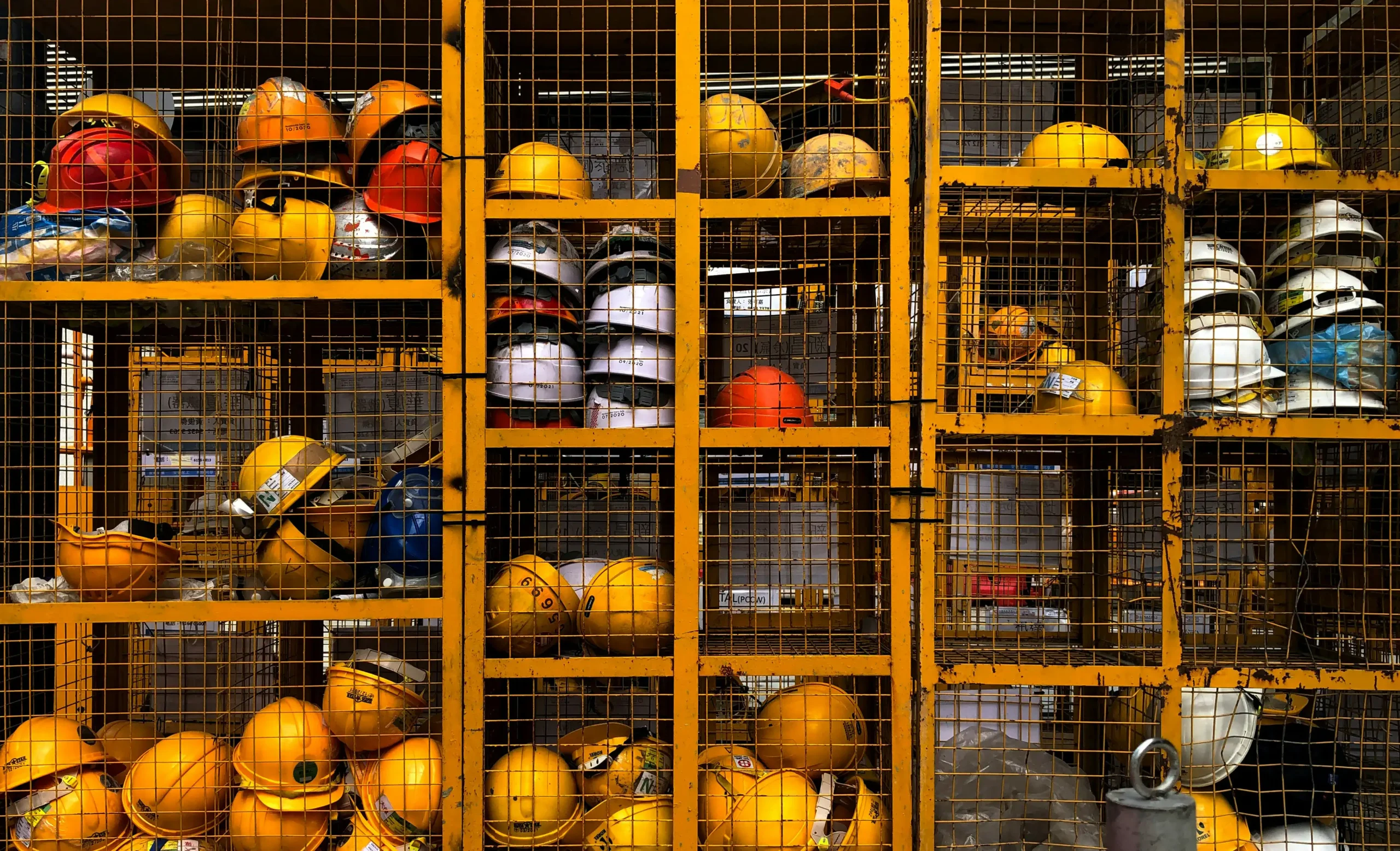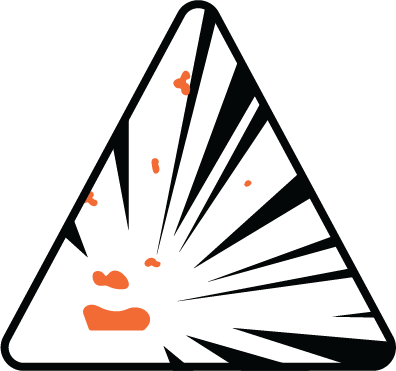Intrinsic Safety
Explore the pivotal role of Intrinsically Safe Technology in hazardous work environments for enhanced industrial safety. Read our detailed overview.
4 workers were killed after an explosion at an Illinois silicon chemical production manufacturer after the use of non-intrinsically safe technology. This accident resulted in:
4 workers were killed after an explosion at an Illinois silicon chemical production manufacturer after the use of non intrinsically safe technology. This accident resulted in:
What is intrinsic safety?
Intrinsic safety is a design principle used in electronics and electrical engineering to ensure that equipment can operate safely in hazardous environments, such as areas with flammable gasses or dust. This approach focuses on limiting the available energy — whether electrical or thermal — to a level below that which could cause ignition. By carefully designing circuits and components to prevent sparks or overheating, intrinsically safe devices are able to function without posing a risk of explosions or fires, even in potentially volatile atmospheres. This is crucial for industries like oil and gas, mining and chemical processing, where the presence of explosive substances is common.

What is intrinsic safety?
Intrinsic safety is a design principle used in electronics and electrical engineering to ensure that equipment can operate safely in hazardous environments, such as areas with flammable gases or dust. This approach focuses on limiting the energy—whether electrical or thermal—available to a level below that which could cause ignition. By carefully designing circuits and components to prevent sparks or overheating, intrinsically safe devices are able to function without posing a risk of explosions or fires, even in potentially volatile atmospheres. This is crucial for industries like oil and gas, mining and chemical processing, where the presence of explosive substances is common.

Intrinsic safety (IS) is critically important for protecting workforces operating in environments where there is a high risk of explosive atmospheres due to the presence of flammable gasses, vapors, or dust. By designing equipment that limits energy output, intrinsic safety minimizes the risk of igniting these hazardous materials, ensuring that workers can perform their duties without the threat of explosions or fires. Read more
Intrinsically safe devices provide a crucial layer of protection and operational continuity, enabling workers to perform their jobs safely and efficiently in hazardous environments.
Worker Safety
By preventing ignition, intrinsically safe devices protect workers from explosions and fires, significantly reducing the risk of injuries and fatalities.
Operational Efficiency
These devices allow for uninterrupted work in hazardous areas, reducing downtime and maintaining productivity.
Confidence and Compliance
Workers feel more secure and capable when using equipment designed to prevent accidents and companies meet stringent safety regulations and standards.
Versatility in Hazardous Areas
Intrinsically safe equipment can be used in various dangerous settings, ensuring that workers are equipped to handle their tasks regardless of the environment.
Unique risks arise in the following industries:
Oil and Gas
This sector involves exploration, extraction, refining and transportation of flammable substances. Intrinsically safe equipment is vital to prevent accidents in environments like offshore platforms, refineries and pipelines.
Chemical Manufacturing
Facilities producing or handling volatile chemicals require IS equipment to safely manage processes and minimize the risk of ignition.
Mining
Underground mining operations deal with combustible dust and gases. IS tools and systems ensure the safety of miners and prevent explosions.
Pharmaceuticals
In pharmaceutical manufacturing, especially where solvent-based processes are used, intrinsically safe systems help in preventing fires and explosions.
Food and Beverage
Certain processes, like grain milling or sugar refining, generate combustible dust. IS equipment is crucial to prevent dust explosions in these settings.
Utilities and Public Safety
Water treatment plants, waste management facilities and emergency services often encounter hazardous environments. Intrinsically safe equipment helps in maintaining safety in these essential services.
Other
Classified areas requiring intrinsically safe devices are not just limited to the industries above. Depending on the work being done, there can be various situations and/or areas across the globe that require intrinsically safe devices.
Several intrinsic safety standards, including ATEX, IECEx and NEC, are designed to ensure equipment’s safe operation in potentially explosive environments. While all aim to prevent the ignition of flammable substances, they differ in their geographic applicability, certification processes, and regulatory requirements.
ATEX (EU Directive)
The ATEX directive stands for Atmosphères Explosibles and regulates equipment used in explosive atmospheres within the European Union. It has two parts: ATEX 137 focuses on protecting workers exposed to explosive risks, while ATEX 95 addresses the design and production of safety equipment. Manufacturers achieve certification through self-declaration of conformity.
IECEx (International Certification)
The IECEx system, governed by the International Electrotechnical Commission (IEC), provides global assurance for equipment used in explosive atmospheres. It covers both electrical and non-electrical equipment and requires independent third-party testing for certification, ensuring compliance with international safety standards.
NEC (U.S. National Electrical Code)
In the United States, the National Electrical Code (NEC), or NFPA 70, governs the safe installation of electrical equipment in hazardous locations. It specifically addresses electrical systems to prevent explosions and requires compliance verification by local authorities.
Understanding these standards is crucial for selecting the right equipment in hazardous environments.
How our solution helps
SlateSafety’s BAND V2 is built to enhance worker safety in challenging environments, with Intrinsic Safety (IS) certification for Class 1 Div. 1 hazardous areas coming in 2025. Once certified, it will be ready for use in environments with flammable gases, vapors or dust, monitoring biometrics like heart rate and exertion in real-time to ensure worker safety. This will make it an ideal solution for industries such as oil and gas, chemical manufacturing, mining and pharmaceuticals. With continuous operation, emergency response capabilities and support for regulatory compliance, the BAND V2 will deliver unmatched safety and reliability for protecting lives and maintaining productivity in hazardous environments. Intrinsic Safety certification coming in 2025.
Intrinsically Safe Certified Technology

Easy-to-Use Software and Mobile App

Real-Time Physiological Monitoring and Alerts
Double-Tap Alerts

Easy-to-Use Software and Mobile App

Real-Time Physiological Monitoring and Alerts
Double-Tap Alerts

Intrinsically Safe Certified Technology

Easy-to-Use Software and Mobile App
Real-Time Physiological Monitoring and Alerts

Double-Tap Alerts

Intrinsically Safe Certified Technology

Easy-to-Use Software and Mobile App
Double-Tap Alerts

Real-Time Physiological Monitoring and Alerts

Privacy and Security
Your privacy and security are paramount to SlateSafety. We’ve implemented rigorous measures to safeguard organizations and individuals, ensuring that their sensitive information is protected from unauthorized access. Our commitment to prioritizing security underscores our dedication to providing a safe and trusted platform for all users.
Read more about Intrinsic Safety
Privacy and Security
Your privacy and security are paramount to SlateSafety. We’ve implemented rigorous measures to safeguard organizations and individuals, ensuring that their sensitive information is protected from unauthorized access. Our commitment to prioritizing security underscores our dedication to providing a safe and trusted platform for all users.
